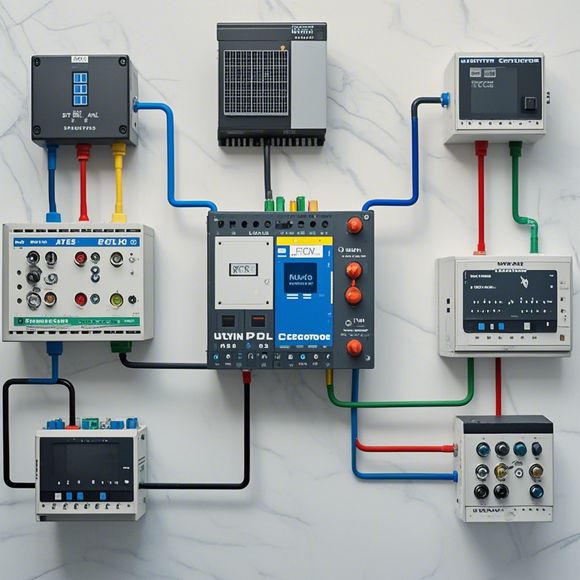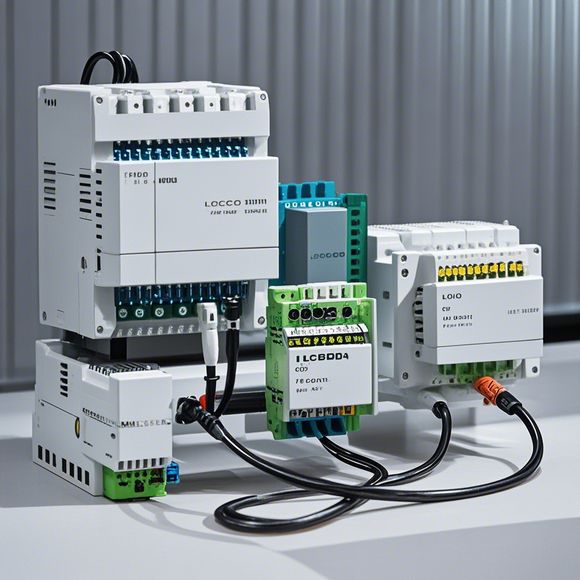What is a PLC Controller?
PLC Controller, also known as Programmable Logic Controller or Plc, is an electronic device that can be programmed to perform a variety of tasks. It's essentially the brain of a factory or industrial system, managing and controlling various components in real-time. PLCs are designed to handle complex tasks such as monitoring and controlling processes, making them ideal for industrial settings. They are used in manufacturing plants, refineries, chemical industries and other industrial environments.
Hello everyone, today we'll be talking about the importance of PLC controllers in the world of manufacturing. So, without any further ado, let’s dive into what exactly PLC stands for and how they work.

Firstly, PLC stands for "Programmable Logic Controller" which means that these devices are designed to control industrial processes with a high degree of flexibility and efficiency. They can be programmed to perform specific tasks or sequences of operations, making them ideal for use in manufacturing, assembly lines, and other production environments.
Now, let's take a closer look at the key components that make up a typical PLC system:
1、Central Processor Unit (CPU): The CPU is responsible for processing data from sensors, input devices, and other sources, as well as performing calculations and decision-making based on this data. It's where all the action happens!
2、Program Memory: This is where the programming code for the PLC is stored. The program code is usually written in a language like ladder logic or function blocks, which makes it easy for engineers to understand and modify the system without having to delve into complex algorithms.
3、I/O Interfaces: These are the connections between the CPU and the various components of the PLC system, such as sensors, motors, and actuators. They allow for the transmission of data between these different parts of the system and ensure that the PLC is able to respond to changes in its environment effectively.
4、Input Devices: These devices collect data from external sources such as sensors or switches. When a change occurs in the environment or the process, these devices trigger an output signal, which is sent to the CPU to be processed.
5、Output Devices: These devices are responsible for producing the desired results of the PLC system. For example, if the CPU has determined that a motor needs to turn on or off, an output signal is sent to the appropriate motor controller or relay, allowing it to operate as required.

Now, back to our main topic: what is a PLC controller? A PLC controller is essentially a small piece of electronic equipment that sits between your factory floor and your computer system. It receives data from various sensors or input devices, analyzes this data, and decides what actions to take based on the data received. The CPU then sends out signals or commands to the appropriate components in the PLC system to carry out those actions, and the PLC controller keeps track of the status and progress of each task to ensure that everything runs smoothly.
So there you have it! Now that you know a little bit more about what a PLC controller is, let's talk about some of the benefits of implementing one into your factory floor. Firstly, PLC controllers are extremely cost-effective, as they can be programmed to perform a wide range of functions without the need for expensive hardware or specialized software. Secondly, they are highly reliable, as they can withstand harsh industrial environments and last for years with proper maintenance. Finally, they offer great flexibility, as they can easily be modified or expanded to accommodate changes in your production process or new technologies that come along in the future.
Of course, there are also some potential drawbacks to using PLC controllers. One of the biggest challenges is ensuring that the programming code is accurate and free from errors. Without careful testing and validation, mistakes can lead to costly downtime or even safety hazards. Additionally, PLC controllers can sometimes be difficult to program or troubleshoot due to their complexity, which can add to the overall cost of implementation.
However, with the right expertise and experience, these challenges can usually be overcome. By working closely with engineers who have extensive knowledge of both programming and hardware, you can create a reliable and efficient PLC system that meets the needs of your factory floor. So why not start looking into PLC controller options now and see how they can benefit your business?
Content expansion reading:
In the realm of foreign trade operations, automation has become an indispensable aspect, and at the heart of this automation lies the PLC controller. The PLC (Programmable Logic Controller) controller is a vital component in various industrial processes, particularly in those involving machines and equipment that require precise control and monitoring.
In simple terms, a PLC controller is a programmable device that interfaces with machines and processes to control their operations. It receives input signals from various sensors and switches, processes these signals according to a pre-programmed logic sequence, and then provides output signals to control the operation of machines or processes. This ability to control and monitor processes makes the PLC controller indispensable in foreign trade operations.

In foreign trade, PLC controllers are used in various scenarios. For instance, they are used in the manufacturing sector to control machines and processes involved in production lines. They ensure that machines operate efficiently and safely, reducing downtime and increasing productivity. Additionally, PLC controllers are also used in logistics and warehousing to automate the movement of goods and materials, ensuring smooth and efficient operations.
Moreover, PLC controllers play a crucial role in ensuring the safety of machines and personnel in foreign trade operations. With their ability to monitor and control processes, PLC controllers can detect any abnormalities or faults in machines and immediately shut them down to prevent accidents or damage. This not only ensures the safety of personnel but also helps maintain the integrity of machines and equipment, extending their lifespan and reducing maintenance costs.
Furthermore, PLC controllers contribute to improving the efficiency of foreign trade operations. By automating repetitive tasks and processes, PLC controllers reduce the dependence on manual labor, saving time and resources. They also provide real-time data and feedback on machine performance and process efficiency, enabling operators to make informed decisions and optimize operations accordingly.
Additionally, PLC controllers are highly customizable and can be programmed to meet specific requirements of foreign trade operations. With the ability to integrate with various systems and devices, PLC controllers can be easily adapted to different scenarios and industries, making them a versatile tool for automation in foreign trade.
Moreover, the PLC controller market is constantly evolving, with new technologies and advancements being made regularly. This evolution brings with it new features and capabilities that further enhance the efficiency and reliability of PLC controllers in foreign trade operations. For instance, newer PLC controllers are now more compact, faster, and more powerful, enabling them to handle complex tasks and processes with ease.
In conclusion, the PLC controller is at the heart of automation in foreign trade operations. Its ability to control and monitor processes, ensure safety, improve efficiency, and adapt to specific requirements makes it an indispensable tool for any foreign trade operation. As the market for PLC controllers continues to evolve, we can expect even more advancements and innovations that will further enhance their performance and reliability in foreign trade operations.
Articles related to the knowledge points of this article:
PLC Programming for Automation Control in the Manufacturing Industry
The Role of Programmable Logic Controllers (PLCs) in Foreign Trade Operations
Connecting a PLC Controller to Your Computer
PLC Controllers: A Comprehensive Guide to Understanding Their Prices